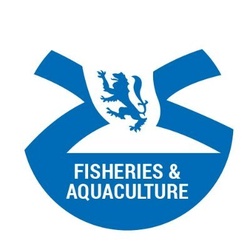Overview: what farm grants are available in Nova Scotia in 2026?
Nova Scotia agriculture grants and funding span federal Business Risk Management programs, Sustainable CAP Nova Scotia funding streams, climate‑smart cost‑share initiatives, and targeted sector supports. Applicants commonly search “what farm grants are available in Nova Scotia 2026,” “how to apply for Nova Scotia farm grants,” and “Nova Scotia agriculture funding eligibility requirements.” Core pillars include AgriStability Nova Scotia, AgriInvest Nova Scotia, AgriInsurance Nova Scotia, and AgriRecovery for extraordinary disasters. Complementary supports range from the On‑Farm Climate Action Fund Nova Scotia (OFCAF) to food processing and market development assistance. Provincial tools such as the FarmNEXT program Nova Scotia (for first‑time farmers), Nova Scotia Farm Loan Board financing, and Perennia funding programs and advisory services help new and established producers move from planning to execution. Many projects also layer ACOA agri‑food funding Nova Scotia, FCC loans agriculture Nova Scotia, and Invest Nova Scotia agriculture funding to complete the capital stack.
Federal programs under Sustainable CAP and Business Risk Management
Under the Sustainable Canadian Agricultural Partnership (Sustainable CAP), Nova Scotia agriculture cost‑share programs typically support innovation, environmental stewardship, market development, and sector resiliency. While specific intakes vary, common themes include equipment upgrades, on‑farm infrastructure, productivity enhancements, and training. Business Risk Management programs stabilize cash flow: AgriStability compensates for large margin declines; AgriInvest offers matching savings accounts for risk mitigation and small investments; AgriInsurance (crop insurance) covers production losses; and AgriRecovery can assist after severe events. These producer support programs function as an integrated safety net that complements non‑repayable funding, contribution agreements, and loan guarantees. For small farms wondering “is AgriStability worth it for small farms in Nova Scotia,” the answer depends on margins, volatility, and diversification—yet many family operations consider enrollment a prudent safeguard alongside AgriInvest. Insurance premium support and disaster recovery assistance may also be available during droughts, hurricanes, or disease outbreaks.
AgriStability, AgriInvest, AgriInsurance, and AgriRecovery
- AgriStability Nova Scotia: income stabilization when reference margin drops significantly, supporting financial resilience for dairy, beef cattle, poultry, fruit and vegetable, and mixed operations.
- AgriInvest Nova Scotia: encourages savings toward working capital, soil health investments, and small equipment purchases, often used for modest upgrades like irrigation drip systems or farm safety improvements.
- AgriInsurance Nova Scotia: crop insurance for insured crops (e.g., apples, wild blueberries, forages, grains, vegetables) with options tailored to regional risks; many producers pair it with frost protection grants Nova Scotia or drainage and tile funding NS to reduce exposure.
- AgriRecovery: ad hoc frameworks activated after disasters (e.g., hurricane damage assistance farms NS or drought relief farm funding Nova Scotia), sometimes combined with ERP disaster relief agriculture Nova Scotia and emergency livestock feed assistance.
Climate and sustainability: OFCAF and environmental stewardship
The On‑Farm Climate Action Fund Nova Scotia (OFCAF) supports beneficial management practices that reduce emissions and improve resilience. Typical BMPs include cover crop funding Nova Scotia, rotational grazing funding Nova Scotia, and improved nitrogen management supported by soil testing rebate Nova Scotia and lime and nutrient management funding Nova Scotia. Producers also pursue soil and water conservation grants Nova Scotia, riparian buffer grants Nova Scotia, and pollinator habitat funding Nova Scotia to deliver nature‑based solutions funding and carbon sequestration farm grants Nova Scotia. Renewable energy farm grants Nova Scotia—such as farm solar panels grant Nova Scotia, biomass heating grant farm Nova Scotia, and energy efficiency farm rebate Nova Scotia—reduce operating costs while advancing climate adaptation farm funding Nova Scotia. Many applicants begin with an Environmental Farm Plan or similar assessment, which can strengthen eligibility and project design for climate‑smart agriculture funding, regenerative agriculture funding, and water stewardship funding.
Provincial programs and delivery organizations in Nova Scotia
Nova Scotia agricultural programs are delivered by provincial departments and partners, with Perennia providing extension and technical support and sometimes facilitating sector projects or Perennia funding programs. The Nova Scotia Farm Loan Board financing offers low‑interest loans, working capital financing, and loan guarantees for farmland, quota, buildings, and equipment. FCC loans agriculture Nova Scotia can complement grants and rebates to complete budgets and bridge contribution timing. Invest Nova Scotia agriculture funding and ACOA agri‑food funding Nova Scotia support innovation, productivity, and export readiness for farms and processors. Applicants should map cost‑share percentages, eligible cost windows, and stacking rules across programs to avoid duplication while maximizing leverage.
FarmNEXT program Nova Scotia and beginning farmer assistance
FarmNEXT program Nova Scotia is designed for first‑time farmers entering agriculture, often offering interest relief that eases early cash flow constraints. Beginning farmer grants Nova Scotia and first‑time farmer grants Nova Scotia may also appear through cost‑share intakes focused on business planning, training, or capital projects. A beginning farmer loan guarantee Nova Scotia and farm succession planning funding Nova Scotia help with intergenerational transfers. New entrant entrepreneurs frequently combine FarmNEXT, the Nova Scotia Farm Loan Board, and FCC to finance land purchase assistance for new farmers NS, farm lease funding programs Nova Scotia, and essential start‑up equipment.
Perennia, extension, and innovation support
Perennia supports producers with technical advisory services, on‑farm trials, and market development initiatives, assisting applications for agriculture innovation funding Nova Scotia and innovation voucher agriculture Nova Scotia. Producers in controlled environment agriculture funding Nova Scotia often access greenhouse automation grants Nova Scotia, hydroponic funding Nova Scotia, and greenhouse heat curtain grants Nova Scotia, supported by Perennia expertise. Sector teams can advise on HACCP funding for processors Nova Scotia, food safety certification funding Nova Scotia, and traceability funding Nova Scotia to meet buyer and export requirements.
Sector‑specific funding priorities and examples
Funding in Nova Scotia reflects the province’s commodities and regions. Applicants should align projects to sector outcomes to score well.
Dairy farm grants and livestock funding Nova Scotia
Dairy farm grants Nova Scotia often favour dairy barn upgrade grants Nova Scotia, milking equipment funding Nova Scotia, and robotic milking grants Nova Scotia that improve efficiency, animal welfare, and energy use. Beef cattle funding Nova Scotia may support handling facilities, fencing grants Nova Scotia for rotational grazing, pasture water systems grants Nova Scotia, and hay and forage establishment grants Nova Scotia. Poultry farm funding Nova Scotia can include poultry barn ventilation grants Nova Scotia, heating efficiency rebates, and biosecurity funding Nova Scotia. Animal welfare funding Nova Scotia and farm safety grants Nova Scotia remain cross‑cutting priorities that reduce risk and improve compliance.
Fruit and vegetable grants Nova Scotia
Fruit and vegetable grants Nova Scotia target productivity, quality, and climate resilience. Apple orchard replant grants Nova Scotia, frost protection grants Nova Scotia, and irrigation grants Nova Scotia help manage weather variability in Annapolis Valley farm grants priorities. Vegetable wash/pack funding Nova Scotia, cold storage funding Nova Scotia, and cold chain funding Nova Scotia improve post‑harvest handling and market access. Soil health grants Nova Scotia farmers—such as cover crops, compost additions, and precision fertigation—often pair with water well grants farms Nova Scotia and water storage pond grants Nova Scotia to stabilize yields.
Wild blueberry funding Nova Scotia
Wild blueberry funding Nova Scotia frequently focuses on blueberry field improvement grants Nova Scotia, wild blueberry harvester funding Nova Scotia, drainage tile grants Nova Scotia, and pollinator strip grants Nova Scotia. Many producers use AgriInsurance for yield protection, complemented by equipment rebates and environmental farm plan funding for land management.
Vineyard and winery grants Nova Scotia
Vineyard and winery grants Nova Scotia, including vineyard trellis funding Nova Scotia and cider and wine equipment funding Nova Scotia, support trellis infrastructure, frost mitigation, and value‑added processing. Export marketing grants agri‑food Nova Scotia help wineries and cideries reach new markets, while branding and packaging grants agri‑food NS and product development funding food Nova Scotia support label compliance and premium positioning.
Greenhouses and controlled environment agriculture
Greenhouse funding Nova Scotia covers greenhouse automation and controls funding Nova Scotia, CO2 enrichment funding greenhouse NS, and season extension high tunnel grants Nova Scotia. Energy efficiency measures such as thermal curtains, biomass heating, and LED lighting are common cost‑share categories. Hydroponic funding Nova Scotia and aquaponics funding Nova Scotia (agriculture) enable diversification and year‑round supply for local markets.
Value‑added agri‑food processing and market development
Food processing funding Nova Scotia enables equipment purchases (e.g., HACCP‑compliant lines), facility upgrades, and food safety certification funding Nova Scotia. Processors use HACCP funding for processors Nova Scotia, recall readiness funding Nova Scotia, and food lab testing funding Nova Scotia to meet buyer standards. Export readiness agri‑food grants NS, export marketing funding for Nova Scotia agri‑food, and market development grants can offset costs for trade shows, certifications, and packaging. Small abattoirs may pursue slaughter capacity funding Nova Scotia and mobile abattoir funding Nova Scotia to increase regional processing. Cold storage construction grant Nova Scotia and walk‑in cooler funding for farms Nova Scotia support cold chain resilience for meat, dairy, fruits, and vegetables.
Equipment and infrastructure: cost‑share categories to watch
Many NS farm grants use contribution agreements with clear caps and cost‑share rates. Popular categories include farm equipment grants Nova Scotia, precision agriculture funding Nova Scotia (including farm drone funding Nova Scotia and GPS‑guided implements), and farm building grants Nova Scotia for barns, milking parlours, or vegetable packing sheds. Irrigation pond funding Nova Scotia, irrigation drip system grants Nova Scotia, farm pond permitting funding Nova Scotia, and water storage pond grants Nova Scotia address drought risk. Drainage and tile funding NS improves field access and reduces losses. Renewable energy farm grants Nova Scotia—solar, biomass, and heat recovery—pair with energy efficiency farm rebate Nova Scotia to lower operating costs. Farm safety grants Nova Scotia often fund guards, lighting, confined‑space ventilation, and training.
Regional variations: Annapolis Valley, Cape Breton, Halifax, Truro, and beyond
Regional priorities matter. Annapolis Valley farm grants often emphasize orchard funding Nova Scotia, apple replant, irrigation, and cold storage. Kings County NS irrigation grant programs and farm drainage grants Kings County NS are frequently cited by fruit growers. Colchester County farm equipment grants and Truro agriculture funding support dairy and mixed farms seeking dairy equipment rebate Nova Scotia. Cape Breton farm funding can highlight livestock infrastructure and pasture improvement grants Nova Scotia. Lunenburg County farming grants for vegetables may focus on wash/pack upgrades and season extension, while Yarmouth/Digby agriculture funding for berries includes strawberry and berry funding Nova Scotia. Producers in the Halifax area farm grants explore urban or peri‑urban opportunities, direct‑to‑consumer farm funding Nova Scotia, and farmers’ market vendor grants Nova Scotia. Pictou County farm grants, Cumberland County agriculture grants, Antigonish agriculture funding, and Guysborough County farm grants often support soil and water, fencing, and forage establishment.
Direct‑to‑consumer, e‑commerce, and agritourism
Marketing grants for farms Nova Scotia, e‑commerce funding for farms Nova Scotia, and branding and packaging grants agri‑food NS help farms sell online and at retail. U‑pick farm grants Nova Scotia, agri‑tourism startup grants Nova Scotia, and direct‑to‑consumer farm store funding Nova Scotia improve visitor experiences and revenue diversification. Farmers’ market vendor grants Nova Scotia can co‑fund tents, signage, or refrigeration. These investments align with market development objectives, traceability equipment grant Nova Scotia, and food safety upgrades to meet regulatory expectations.
Inclusion: Indigenous, women, youth, newcomers, and cooperatives
Indigenous agriculture funding Nova Scotia and Mi’kmaq agriculture grants Nova Scotia support Indigenous food sovereignty funding Nova Scotia, land stewardship, and community processing capacity. Women in agriculture grants Nova Scotia and women farmer microgrants Nova Scotia strengthen leadership and entrepreneurship. Youth farm entrepreneurship grants Nova Scotia, student farm employment grant Nova Scotia, and farm wage subsidy Nova Scotia agriculture help recruit and train the next generation. Newcomer farmer funding Nova Scotia and cooperative farm funding Nova Scotia expand land access and shared infrastructure. Community farm funding Nova Scotia can address urban food security in the Halifax Regional Municipality and rural service gaps in other counties.
Disaster recovery, risk, and insurance
Nova Scotia’s coastal climate creates risks ranging from drought to hurricanes. Drought relief funding farms Nova Scotia, hurricane recovery agriculture grants NS, and ERP disaster relief agriculture Nova Scotia may appear after severe events. Livestock mortality funding Nova Scotia, biosecurity funding Nova Scotia, and farm insurance premium support Nova Scotia improve preparedness. Manure management funding Nova Scotia, manure storage funding Nova Scotia, and water protection projects reduce environmental risk and regulatory exposure. Applicants should maintain documentation, including photos, invoices, and field records, to support claims and audits.
Eligibility: who qualifies for Nova Scotia agriculture funding?
Most programs define eligibility by operation type (for‑profit farms, processors, cooperatives), registration status, tax filings, and minimum sales thresholds. Some streams target beginning farmers, youth, or specific commodities such as dairy, poultry, wild blueberries, or vineyards. Projects must usually occur in Nova Scotia and align with program outcomes like productivity, sustainability, and market access. Applicants ask “how to apply for Nova Scotia farm grants” and “Nova Scotia farm grants application form.” Typical steps include confirming eligibility, preparing a budget and quotes, completing required plans (e.g., Environmental Farm Plan), and submitting before deadlines. Keep in mind deadlines for Sustainable CAP programs Nova Scotia shift by intake; monitor announcements, as late submissions are often ineligible.
How to apply: documentation, budgets, and timelines
Strong applications provide a concise project rationale, measurable outcomes, and a realistic schedule. Include two or three comparable quotes for equipment or construction, stamped drawings when required, and permits for water wells, farm pond construction funding, or electrical upgrades. Identify stacking with FCC loans and the Nova Scotia Farm Loan Board interest rates agriculture to manage cash flow between claim reimbursements. If using export assistance agri‑food or market development, attach marketing plans and buyer letters. For food safety projects, budget for HACCP consultants and training, then seek consultant cost share agriculture NS where available. Maintain a compliance binder for site visits.
Funding strategy: stacking, cash flow, and procurement
Producers often blend non‑repayable funding with low‑interest loans and their own capital. For example, a greenhouse expansion might combine greenhouse funding Nova Scotia for automation, energy efficiency rebates for thermal curtains, a Farm Loan Board mortgage for the structure, and FCC working capital for installation. Understand procurement rules—some programs require competitive quotes or Canadian content. Track cost‑share percentage for irrigation Nova Scotia farms or tile drainage cost share Nova Scotia to optimize scope. Avoid starting work before approval if the program disallows retroactive costs. Create a Gantt chart so construction, equipment lead times, and claim deadlines align.
Eligible and ineligible costs: examples
Eligible costs often include equipment (milking robots, egg grading equipment funding Nova Scotia, vegetable pack lines), infrastructure (barns, wash/pack rooms, cold storage), and professional fees (engineering, HACCP). Ineligible costs may include routine maintenance, used equipment, or costs incurred before approval. Worker housing funding Nova Scotia and seasonal worker housing funding Nova Scotia can be eligible under specific streams. Training grants for farm workers Nova Scotia and mental health funding for farmers Nova Scotia address workforce sustainability. Pasture improvement grants Nova Scotia, pasture reseeding grants Nova Scotia, fencing, and water systems are common cost‑share categories for grazing. Farm biogas digester funding Nova Scotia, carbon credit pilot funding, and nature‑based solutions funding may be available under innovation or climate portfolios.
Precision agriculture, agritech, and data
Precision agriculture funding Nova Scotia supports GPS guidance, section control, variable rate, sensors, and data platforms that improve input efficiency. Farm drone funding Nova Scotia can fund mapping, scouting, and prescription tools. Controlled environment agriculture grants and greenhouse automation improve climate control and labour productivity. Producers often justify these projects with soil sampling, yield maps, and water stewardship metrics that align with environmental and economic outcomes.
Regional water management: irrigation, wells, and ponds
Irrigation pond funding Nova Scotia, water well grants farms Nova Scotia, and farm pond construction funding Nova Scotia are critical for fruit and vegetable growers facing summer drought. Projects may include design, permitting, liners, pumps, filters, and drip systems. Riparian fencing grants Nova Scotia protect watercourses while enabling rotational grazing. Tree planting grants for farms Nova Scotia, windbreak and shelterbelt grants Nova Scotia, and pollinator strip grants Nova Scotia deliver co‑benefits: reduced wind stress, enhanced biodiversity, and carbon sequestration.
Processing capacity and cold chain
Cold storage construction grant Nova Scotia, walk‑in cooler funding for farms Nova Scotia, and cold chain funding Nova Scotia improve quality retention from field to market. Meat processing funding Nova Scotia, small abattoir upgrades, and mobile abattoir grant Nova Scotia expand regional slaughter capacity and reduce transport stress on animals. Processors can combine ACOA support with provincial cost‑share for equipment, HACCP audits, and export packaging.
Budgeting for success: examples by farm type
- Dairy: robotic milker, plate coolers, heat recovery, LED lighting, ventilation, manure storage funding Nova Scotia, and farm safety upgrades.
- Beef: handling systems, fencing, pasture water systems, forage establishment, hay storage, winter housing ventilation.
- Poultry: barn ventilation, heating efficiency, biosecurity, egg grading equipment, composting systems.
- Fruit/vegetable: irrigation ponds, drip systems, frost fans, wash/pack lines, coolers, controlled atmosphere storage.
- Wild blueberry: land improvements, drainage tile, harvesters, pollinator support, access roads.
- Vineyard/winery: trellis systems, frost protection, fermentation tanks, bottling lines, branding and packaging.
Compliance, claims, and audit readiness
Keep detailed records: invoices, proof of payment, serial numbers, photos before/after, and permits. Submit progress reports on time and request extensions early if supply chain delays occur. Ensure purchased items match approvals; substitutions require written consent. For projects with export assistance agri‑food, retain evidence of trade shows, leads, and outcomes. For environmental projects, document soil tests, cover crop seeding, and grazing plans to verify BMP adoption.
Key takeaways and next steps
Nova Scotia farm funding combines federal programs (AgriStability, AgriInvest, AgriInsurance, OFCAF), Sustainable CAP Nova Scotia funding, provincial cost‑share streams, and financing from the Nova Scotia Farm Loan Board and FCC. Sector‑specific priorities—dairy, poultry, wild blueberries, vineyards, fruit and vegetables, and greenhouses—offer targeted opportunities. To move forward, confirm eligibility, assemble quotes, align timelines with deadlines for Sustainable CAP programs Nova Scotia, and design projects that deliver measurable productivity, sustainability, and market outcomes. When in doubt, consult delivery agents and technical advisors such as Perennia to refine scope and strengthen applications.





































